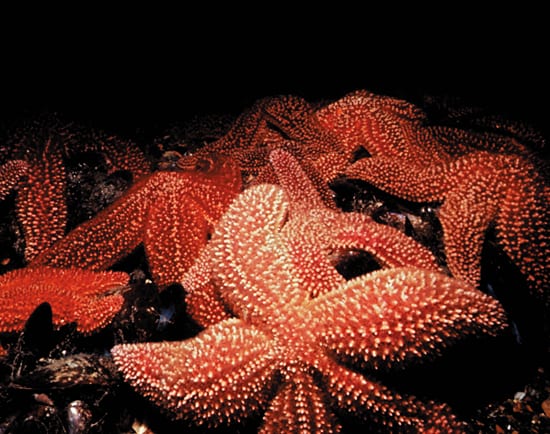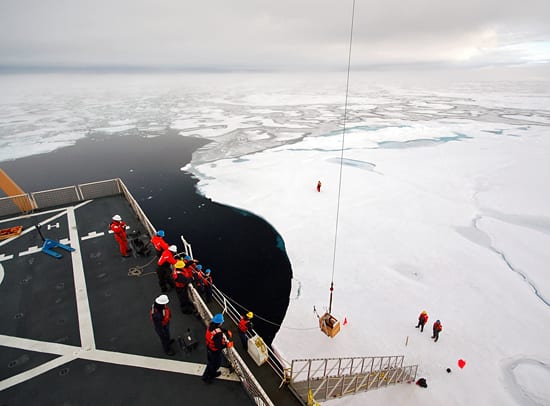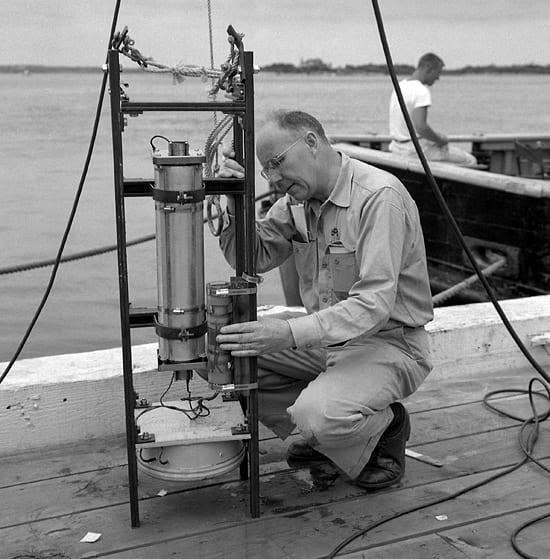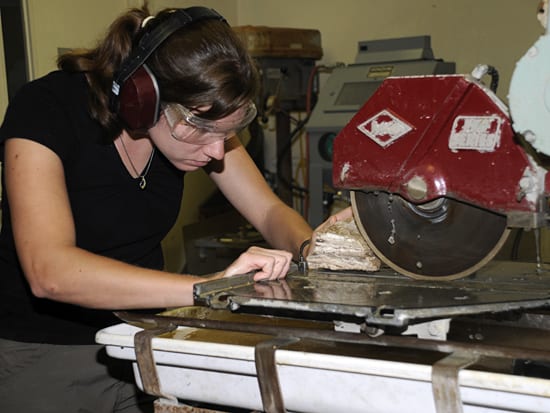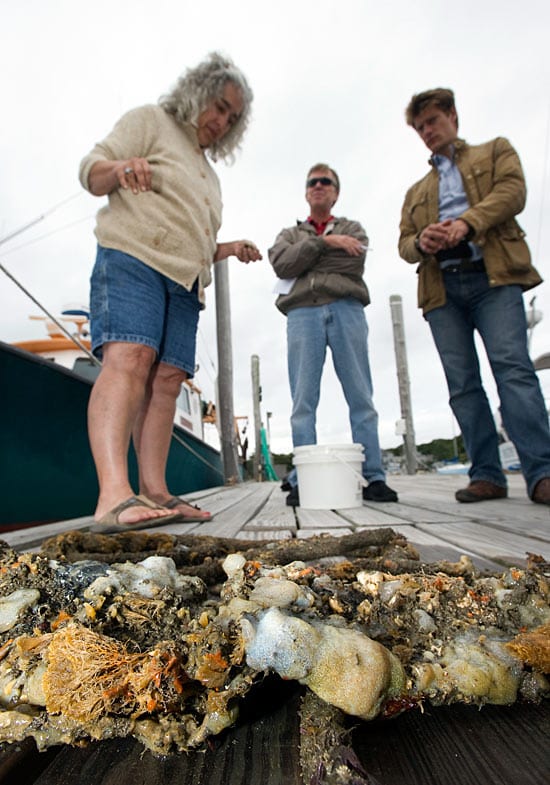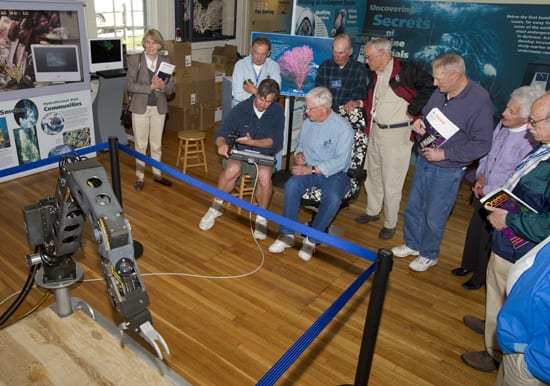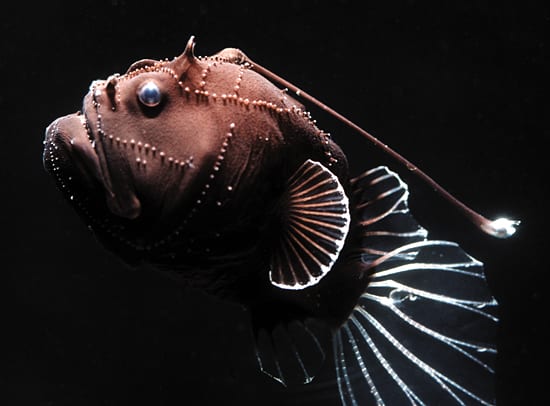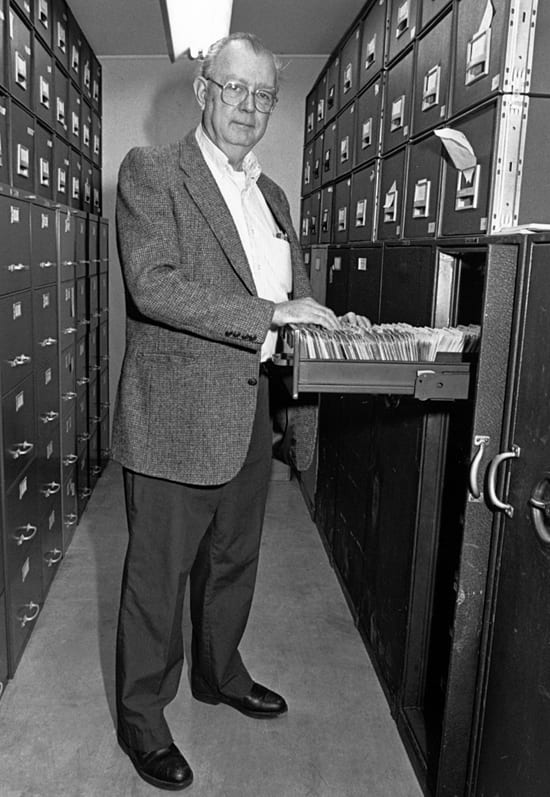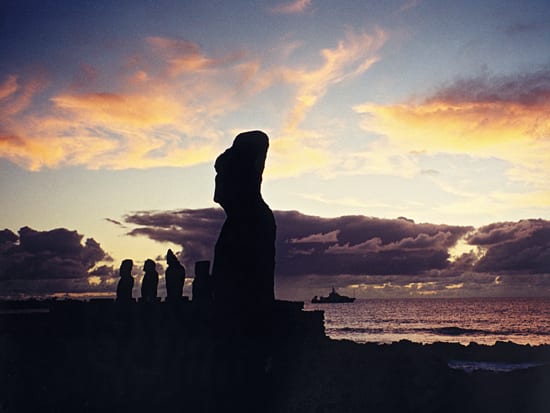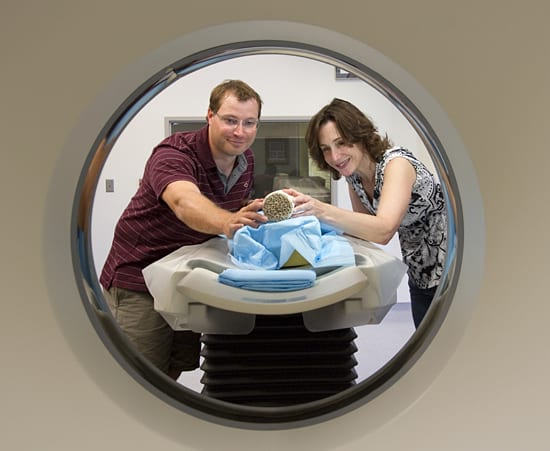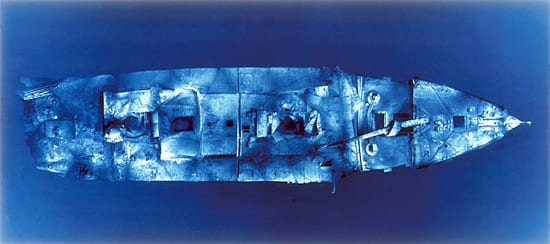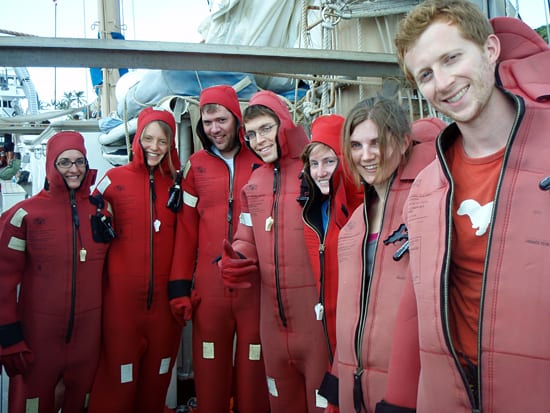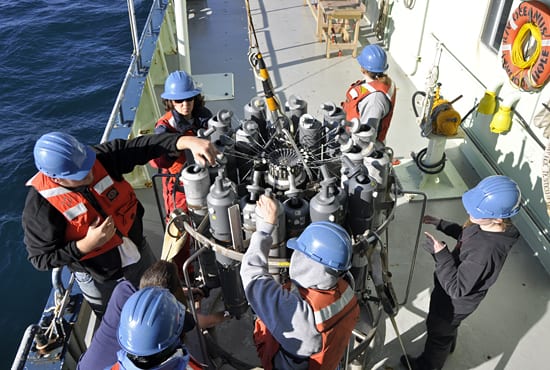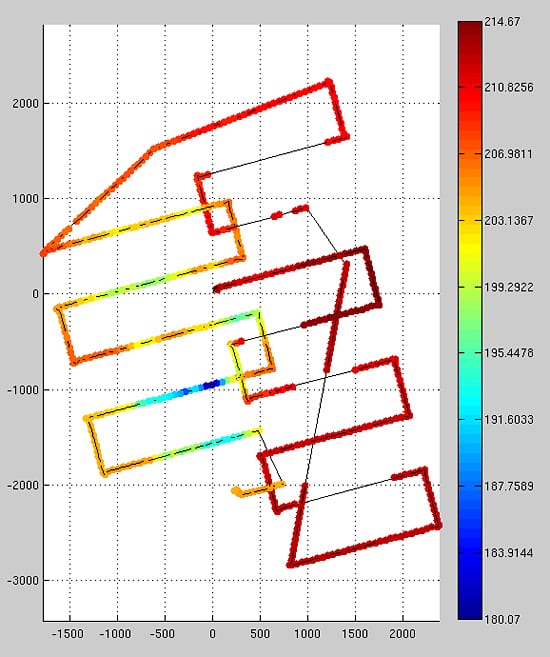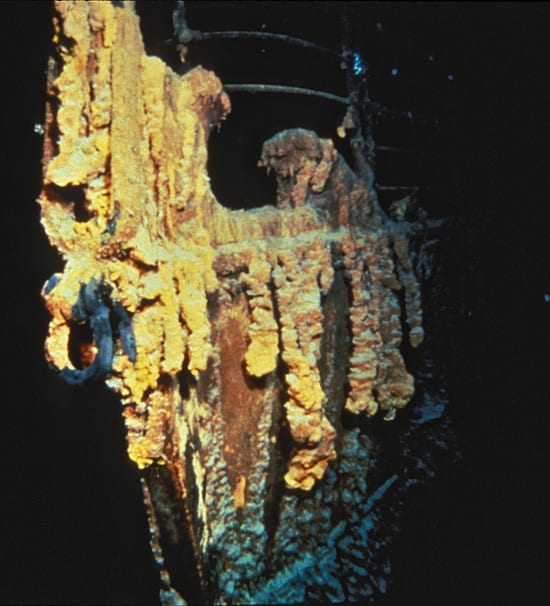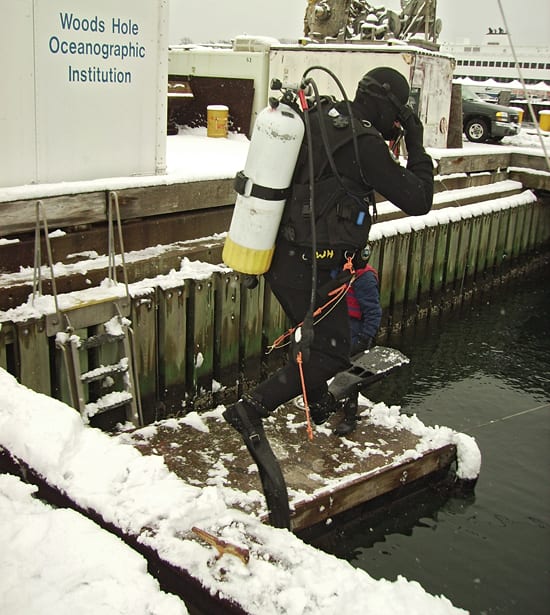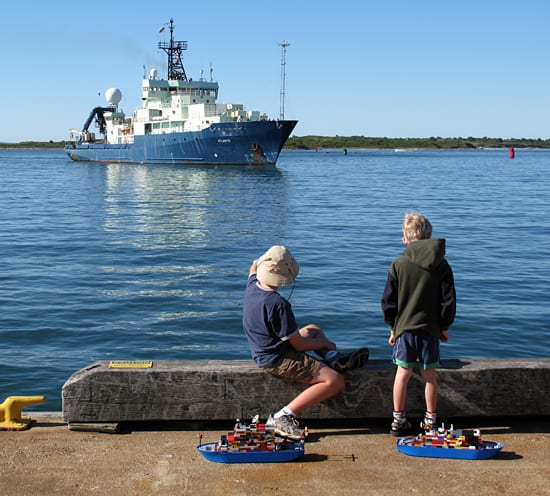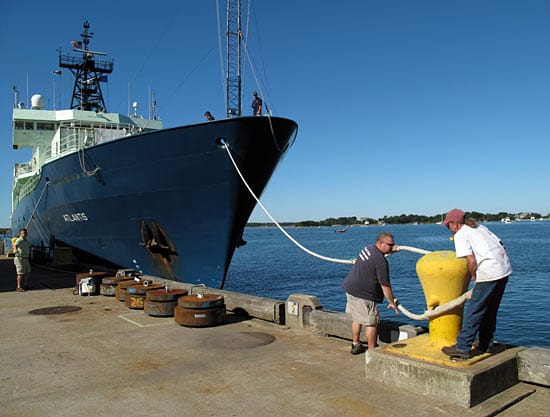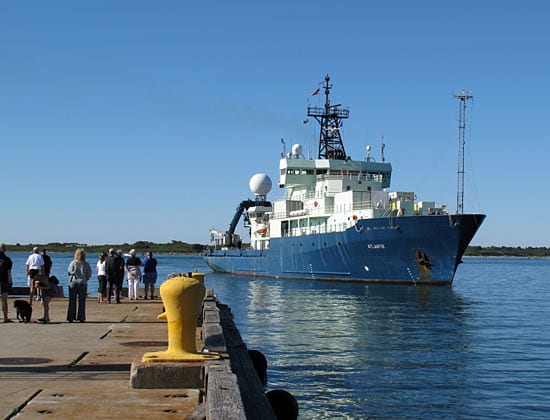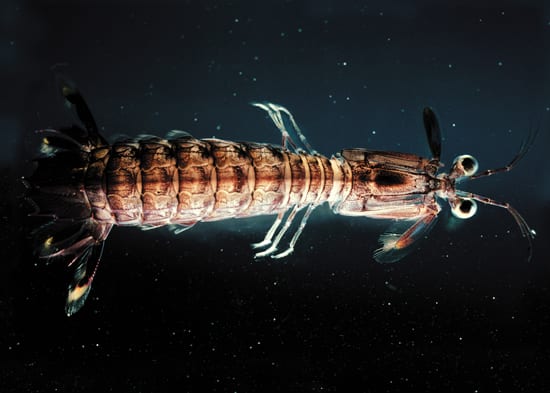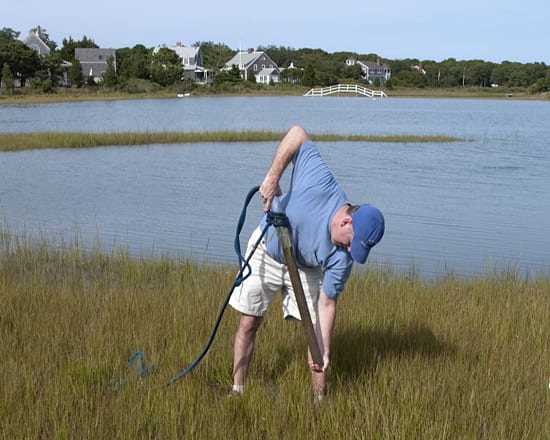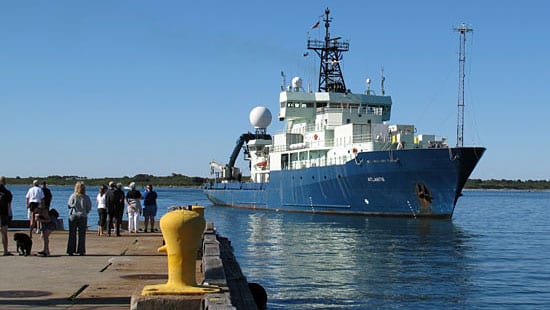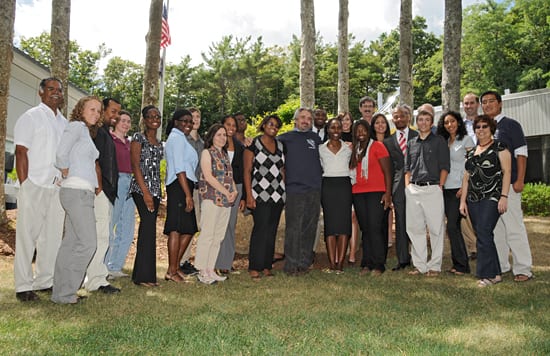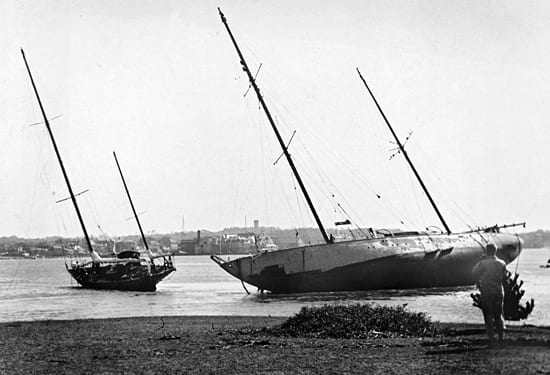Multimedia Items
When the Stars Come Out
A constellation of starfish congregates under the WHOI Pier in the late 1980s. Blue mussels, a favorite food of starfish, sometimes settle and grow in huge colonies on the pier. When the…
Read MoreRobust Science in a Fragile Environment
A crane lowers equipment for a meteorological station from the deck of the US Coast Guard icebreaker Healy to the ice in the Beaufort Sea, where WHOI technicians John Kemp…
Read MoreUnderwater Photography Pioneer
Early in his career, Harold “Doc” Edgerton (shown here working on the WHOI dock in 1959), built underwater flashes and cameras for famed marine explorer Jacques-Yves Cousteau. Operating cameras in…
Read MoreJust a Little Off the Side
Evelyn Mervine, a graduate student in the MIT/WHOI Joint Program, uses a power saw to cut a sample of carbonate rock she collected from an ophiolite in Oman. Ophiolites are…
Read MoreSquirts to Reckon With
WHOI biologist Mary Carman regales Ocean Science Journalism Fellows Clarke Canfield (center) from the Associated Press and Frank Pope from The Times of London with tales of the damage being…
Read MoreVolunteering at WHOI–Priceless
Each Spring the WHOI volunteers gather to get geared up for a new season. As part of the April 2010 gathering, volunteers were coached by engineering assistant Tito Collasius (seated,…
Read MoreSmall But Fierce
This deep-sea angler fish was collected from a submersible at about 800 meters depth, where little or no sunlight penetrates. Just 3 inches long but fierce-looking, it has a long…
Read MoreA Life, Archived
Bill Dunkle began his career at WHOI working as a drafter on the third floor of the Bigelow Lab, but he very quickly decided he would rather go to sea.…
Read MoreStone Giants
The R/V Atlantis works off the coast of Easter Island (Rapa Nui) in the southeastern Pacific Ocean during a 1998 research expedition. During the cruise, researchers used the submersible Alvin…
Read MoreCT Scans Reveal Coral’s Secrets
WHOI researchers Neal E. Cantin and Anne L. Cohen examine a Red Sea coral specimen just outside a CT scanner tube. Their pioneering use of CT scanning revealed that these…
Read MorePiecing Together Titanic
This mosaic of the RMS Titanic on the seafloor 2.5 miles below the surface was assembled in 1987 using nearly 100 of the 53,000 images taken by the towed sled…
Read MoreSurviving Graduate School
A group of new graduate students in the MIT/WHOI Joint Program try on emergency survival suits, also called “Gumby suits,” during the 2010 Jake Peirson Summer Cruise. Each year, the…
Read MoreDeep-Sea Organisms in Shallow Waters
In May, scientists aboard R/V Oceanus collected sediments and water—shown here in a CTD rosette—to examine the dispersal distances of amoeba-like benthic organisms off Massachusetts and Georgia. In the lab,…
Read MoreThe Track of a Hunter
The track of the hybrid remotely operated vehicle (HROV) Nereus is depicted here as it hunted for hydrothermal vents in the Cayman Trough in 2009. The green and blue dots…
Read MoreOuter Space on the Seafloor
The discovery of rusticles—rusting iron—on the wreck of the RMS Titanic opened a new field of research into the microscopic bacteria eating the iron. If bacteria can thrive on iron…
Read MoreBrrrr!
Not all scuba diving occurs in balmy seas or near coral reefs. Scientists dive in Antarctica to collect zooplankton that occur nowhere else, and–as shown here–divers brave the icy waters…
Read MoreWelcome Home Atlantis
Nathan (left) and Patrick McGuire, sons of WHOI associate scientist Jeff McGuire, welcome R/V Atlantis home to Woods Hole with the Lego models of the ship they made this summer.…
Read MoreAtlantis Returns
Atlantis Returns
atlantis_arrival_ss1_118392.jpg
Read MoreBig Shrimp
Scientists collected this 2.5-inch juvenile stomatopod, or “snapping shrimp,” in a plankton net in the Arabian Sea. Adult stomatopods live on coral reefs, where big eyes and good color vision…
Read MoreThe Impact of Storms Past and Future
WHOI scientist Jeff Donnelly takes a sediment core in the marsh behind Cape Cod’s Menauhant Beach, to show participants in the 2004 Ocean Science Journalism program a layer of sand…
Read MoreAtlantis Returns
Celebrating the End of a Science-Filled Summer
Students, scientists, and organizers—including Ambrose Jearld (far left, Northeast Fisheries Science Center), George Liles (center, Woods Hole Aquarium), and Ben Gutierrez (third from right, USGS)—recently celebrated a summer of learning…
Read MoreThe Great Atlantic Hurricane of 1944
On September 14, 1944, with a category 4 hurricane working its way up the Eastern seaboard, WHOI’s research vessel Atlantis was secured to the National Marine Fisheries Service dock in…
Read More
